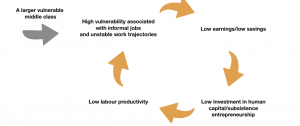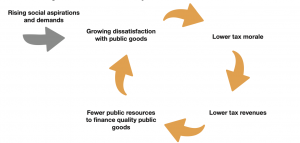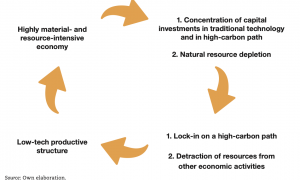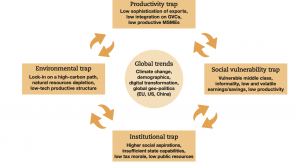DAILY CURRENT AFFAIRS (FEBRUARY 20 & 21, 2022)
THE INDIAN POLITY AND CONSTITUTION
1. ARUNACHAL PRADESH & MIZORAM CELEBRATES STATEHOOD DAY
THE CONTEXT: On 20th February,2022 the two north-eastern states, Arunachal Pradesh and Mizoram celebrated the day they were accorded the status of states.
THE EXPLANATION:
- Arunachal Pradesh was earlier known as Northeast Frontier Agency (NEFA). It was renamed Arunachal Pradesh in 1972 and granted a union territory status. Earlier, the state was a part of Assam, and after it became a UT, its administration was entrusted in the hands of a chief commissioner. With the passing of the constitution 55th Amendment Act, 1987 Arunachal Pradesh finally became a 24th
- Mizoram’s statehood came after a bloody period of insurgency. Separatists’ groups had demanded independence from India in the 1960s. Mizo National Front (MNF) took to armed rebellion to realize this demand. The Indian government resorted to bombing parts of the state in retaliation. In 1986, Mizoram Peace Accord was signed between India and MNF. Mizoram was granted statehood on February 20, 1987, as per statehood Act of 1986 and Mizoram became the 23rd State of the Indian union.
THE HEALTH AND SOCIAL ISSUES
2. LEPROSY DETECTION FELL DURING PANDEMIC: REPORT
THE CONTEXT: According to the latest report by the Leprosy Mission Trust India in 2019, the states accounted for 35% of the total new leprosy cases reported in the country. They reported 22,000 new cases during April-September 2019, but only 8,270 for the same period in 2020.
THE EXPLANATION:
According to the National Leprosy Eradication Programme (NLEP) report, it highlights that the proportions of multibacillary (MB) leprosy and grade-2 disability (G2D) among the new cases increased by 20% and 12%, respectively, during April-September 2020, compared to the same six-month period in 2019. Moreover, the proportion of both women and children among new cases decreased by 70% compared to the same two quarters in 2019.
The COVID-19 pandemic and its ensuing recommendations on social distancing and lockdowns caused a fall of 62.5% in the detection of active leprosy cases between April and September 2020 when compared with the previous year’s corresponding period in four States — Andhra Pradesh, Odisha, Bihar and Madhya Pradesh.
What is leprosy?
- Leprosy is also known as Hansen’s disease.
- It is an infectious disease which is caused by a bacillus Mycobacterium leprae.
- The disease has been named after Gerhard Henrik Armauer Hansen who was a Norwegian physician.
- Hansen proved that leprosy is not a hereditary disease but is caused by a bacterium.
- The disease is a curable disease and treatment at the early stage can prevent any disability.
- It can cause a progressive and permanent damage to the skin, nerves, limbs and eyes if it is left untreated.
- The incubation period of the disease is 5 years usually. Symptoms of the disease can be seen within 1 year but it could also take 20 years or even more years to occur.
How it spreads?
The disease spreads through the droplets either from the nose or mouth when the affected person sneezes or coughs.
| THE NATIONAL LEPROSY ERADICATION PROGRAMME
It is a centrally sponsored Health Scheme under the National Health Mission of the Ministry of Health and Family Welfare, Govt. of India. OBJECTIVES: · To reduce Prevalence rate less than 1/10,000 population at sub national and district level. · To reduce Grade II disability % < 1 among new cases at National level · To reduce Grade II disability cases < 1 case per million population at National level. · Zero disabilities among new Child cases. · Zero stigma and discrimination against persons affected by leprosy. |
THE ENVIRONMENT AND ECOLOGY
3. MOTHS VITAL TO POLLINATION IN THE HIMALAYAN ECOSYSTEM, FINDS STUDY
THE CONTEXT: According to the findings,moths are vital to pollination in the Himalayan ecosystem of northeast India. The study establishes 91 species of moths as potential pollinators of 21 plant families in Sikkim and Arunachal Pradesh in the northeastern Himalayas.
THE EXPLANATION:
- The details of the study were recently published in a paper titled “Settling moths are the vital component of pollination in Himalayan ecosystem of North‑East India,” pollen transfer network approach revealed in Scientific Reports, a publication from the Nature group of journals.
- The results assume significance as a majority of the pollination-related studies are based on diurnal pollinators (bees and butterflies) and the role of nocturnal pollinators have so far received less scientific attention.
- “In the present study about 65% moths (91 species) carried sufficient quantities of pollen grains to be considered as potential pollinators. Teliphasa sp. (Crambidae) and Cuculia sp. (Noctuidae) are found to carry the highest quantity of pollen”.

- Another interesting outcome of the study is that the moth species achaeajanata (a well-known pest of various economically important plants) was identified as a potential pollinator of three plant families, indicating that moths can provide net benefits as pollinators even when acting as larval herbivores of the same species.
- According to the Scientists of the ZSI, the study assumes significance as it revealed a high degree of selectivity in moths, which are generally considered generalists (that is, not very choosy about food plants), and season and altitude affect the role of moths as potential pollinators.
- Also, they noted here are about 12,000 moth species in India and about 160,000 moth species in the world, and the study can go a long way in understanding the role of the nocturnal insect pollinators.
QUICK FACTS:
- Made for each other: Bees pollinate the flowers of a whole range of plants that humans cultivate for food — fruits like apples, spices like cardamom, onion, coffee, coconut — its a long list. Bee pollinated flowers bloom during the day, when bees fly to look for food. They contain nectar, a sugar rich liquid that bees love. Bees also feed on pollen. Nectar gives the bees energy while the pollen provides them with proteins.
- Moths are attracted to purple, pink or white flowers, which have a strong, sweet smell.
- Tobacco is pollinated by moths. Bat pollinated flowers have a strong, musty smell and are bowl shaped; pollen gets stuck onto the bat’s face as it drinks the nectar.
4. CENTRE MOOTS POLICY ON SYNTHETIC BIOLOGY
THE CONTEXT: The Centre is working on a national policy on synthetic biology, an emerging science that deals with engineering life forms for a wide range of applications from making designer medicines to foods.
THE EXPLANATION:
- According to the range of experts from India, “It is time for India to consolidate its stand on the science of synthetic biology and communicate its interests and aspirations in relevant international fora with clarity and should avoid conflicting stands on science on one hand and policy on the other. “
- As part of the 12th Five-Year Plan, India had set up a task force on systems biology and synthetic biology research in 2011. This body underlined the potential benefits from synthetic biotechnology in biofuels, bioremediation, biosensors, food and health and made a strong case for a push for the technology and highlighted that India could be a world leader as a protector and supporter of “open-source biological platforms”.
- Instances of application of synthetic biology include the use of gene editing systems such as CRISPR that allow defective genes in animals, plants and even people to be silenced, or changed, and control biological outcomes. The discovery of the CRISPR system earned scientists Jennifer Doudna and Emmanuelle Charpentier the Nobel Prize for Chemistry in 2020.
- However, legislation regarding genetically modified crops are still in a lurch in India.Due to opposition from several interest groups in India, the proposed Biotechnology Regulatory Authority of India Bill is pending approval in Parliament since 2013. Currently, approvals for such crops come from the Genetic Engineering Appraisal Committee (GEAC) under the Ministry of Environment, Forest and Climate Change and Review Committee on Genetic Manipulation (RCGM) under the Department of Biotechnology.
BACKGROUND:
What is Synthetic biology?
Synthetic biology refers to the science of using genetic sequencing, editing, and modification to create unnatural organisms or organic molecules that can function in living systems. Synthetic biology enables scientists to design and synthesise new sequences of DNA from scratch.
APPLICATIONS:
- In the pharmaceutical industry, synthetic biology can be used to make natural compounds such as artemisinin used for the treatment of malaria and Car T cell therapy for cancer treatment. It is starting to be used in the fashion industry as well; some companies are exploring the possibility of dyeing jeans without producing hazardous waste.
- Then there are companies using it to deliver fixed nitrogen to plants instead of using fertilisers, engineering microbes to create food additives or brew proteins.
THE GOVERNMENT SCHEMES IN NEWS
5. THE GOVERNMENT OF INDIA & WORLD BANK SIGN LOAN AGREEMENT FOR REWARD PROJECT
THE CONTEXT: The Government of India, State Governments of Karnataka and Odisha, and the World Bank have signed loan agreements of 115 million US dollars for the implementation of “Rejuvenating Watersheds for Agricultural Resilience through Innovative Development” (REWARD) Project.
ABOUT THE PROJECT:
- It will help national and state institutions adopt improved watershed management practices to help increase farmers’ resilience to climate change, promote higher productivity and better incomes. Ministry of Finance in a statement said that the Government of India has committed to restoring 26 million hectares of degraded land by 2030 and doubling farmers’ income by 2023.
- It is effective watershed management can help enhance livelihoods in rainfed areas, while building a more resilient food system.
- It will also help the participating and other states to adopt new approaches to watershed development.India has one of the largest watershed management programs in the world. This programme will further advance this progress by developing and applying comprehensive spatial data and technologies, decision support tools, and knowledge exchanges.
Objectives of the project
- The outcomes are prevention of soil run-off, regeneration of natural vegetation, rainwater harvesting and recharging of the groundwater table.
- This enables multi-cropping and the introduction of diverse agro-based activities, which help to provide sustainable livelihoods to the people residing in the watershed area.
6. THE PM FLAGS OFF 100 KISAN DRONES
THE CONTEXT: The Prime Minister flagged off 100 Kisan drones in different cities and towns of India to spray pesticides in farms across India. He virtually addressed to a group of farmers gathered at Manesar from where the “Drone Kisan Yatra” was flagged off.
THE EXPLANATION:
What is a Kisan drone?
- The Kisan drone will have an unmanned tank filled with insecticides and nutrients. The drones are expected to have a high capacity of 5 to 10kg. The drone will spray the same amount of pesticide on about one acre of land in just 15 minutes. This will save time, will require less effort and spraying will be done uniformly.
- Also, it will be used to boost the agricultural sector in the country, the use of Kisan Drones will be promoted for crop assessment, digitization of land records etc.
What is the Need?
- This step was taken as the government aims to promote chemical-free national farming.
- During the Budget 2022 the finance minister announced “the Chemical-free Natural farming to be promoted throughout the country, with focus on farmers’ lands in 5-kilometre-wide corridors along the river Ganga in the first stage.
- Kisan Drone will usher in a new edge revolution as high-capacity drones will be used to carry vegetables, fruits, fishes to the market directly from the farms. “These items will be supplied directly to the market with minimal damage, consuming lesser time, resulting in more profits to farmers and fishermen”.
NEWS IN SHORTS-PT PERSPECTIVE
7. THE ASSAM GOVERNMENT LAUNCHED “PROJECT AROHAN”TO HONE STUDENTS’ SKILLS
Assam Government will launch a four-year mentorship programme called ‘Project Arohan’ to provide guidance to students and improve their skills.
8. GEOGRAPHICAL INDICATION (GI) LABEL ON KASHMIR PASHMINA
In order to preserve the centuries old art of spinning and weaving of genuine pashmina fabric. And to maintain international standards the Government of India (Under WTO) has established a quality mark for genuine Pashmina that will identify items the genuine fiber known as Pashm obtained from the goat living in Ladakh of Kashmir region. Geographical Indication (GI) Label on Kashmir Pashmina is a US patent stamp on the original ‘Kashmir Pashmina’ fabric or its products and is known as the G.I Mark.
9. THE STUDY ON KASHMIR SHAIVISM
THE CONTEXT: The Kashmir Shaiva Institute (KSI) will come up as the first research, studies and publications centre on Kashmir Shaivism.
THE EXPLANATION:
- Kashmiri Shaivism, also called Pratyabhijna(Sanskrit: “Recognition”), religious and philosophical system of India that worships the god Shiva as the supreme reality. The school is idealistic and monistic, as contrasted with the realistic and dualistic school of Shaiva-siddhanta.
- It is actually a group of several monistic and tantric religious traditions that flourished in Kashmir from the latter centuries of the first millennium C.E. through the early centuries of the second.
- Vasugupta is regarded by some as the founder of the system of Hindu philosophy known as Advaita Shaivism of Kashmir, or Trika. Vasugupta’s Shiva Sutra is an important Yoga text, foundational to the Trika system of Kashmir Shaivism.
- Anuttara is the ultimate principle in Kashmir Shaivism, and as such, it is the fundamental reality underneath the whole Universe. Among the multiple interpretations of anuttara are: “supreme”, “above all” and “unsurpassed reality”.
THE PRELIMS PRACTICE QUESTIONS
QUESTION OF THE DAY 21STFEB 2022
Q. Consider the following statements about Pashmina wool:
- It is derived from the undercoat of Changthangi goat.
- The undercoat is collected by combing goat, not by shearing.
- The tribal people of Kashmir valley are traditional producers of Pashmina wool.
Which of the statements given statements is/are correct?
a) 1 only
b) 1 and 2 only
c) 1 and 3 only
d) 1, 2 and 3
ANSWER FOR 19TH FEB 2022
Answer: A
Explanation:
- Green Hydrogen: It is produced from renewable resources of energy and not fossil fuels. The by products are water and water vapor.
- Blue Hydrogen: It is sourced from fossil fuels. The emission or the by products such as CO2 and CO are stored. It is better than grey hydrogen.
- Grey Hydrogen: India’s bulk comes from fossil fuels at present.




